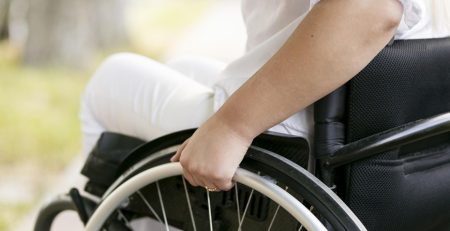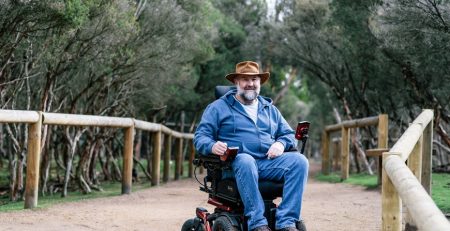- No products in the cart.
A Guide to Manual Handling Equipment in Aged Care
Introduction
Manual handling equipment, sometimes known as lifting and handling equipment, plays an integral role in helping older people to retain independence while also reducing the risk of injuries and accidents for carers and the people they look after. There are many different types of equipment used in aged care settings, hospitals and private homes. In this article, we’ll explore some of the most commonly used types of equipment in aged care.
Manual handling equipment for aged care
Using equipment to move and handle individuals helps to promote comfort and confidence and eliminate the risk of injuries and long-term health issues. Studies suggest that musculoskeletal disorders are prevalent among healthcare workers. Having access to suitable manual handling equipment and training can help to lower risks dramatically. Here are some of the most important examples of lifting and handling equipment used for caring for the elderly:
1. Mobile Hoists
Mobile hoists can be used anywhere in an aged care setting or private home to assist with lifting and moving the individual from one position to another. Lightweight and easy to move around, mobile hoists are often used with other pieces of equipment, including stretchers and slings, to make daily tasks, such as getting out of bed, washing and getting dressed easier and facilitate quick and easy relocation. Mobile hoists are very versatile and they are simple to operate and control.
2. Slide sheets
Slide sheets, also known as sliding sheets, are used frequently to help individuals to get into bed, to change position to optimise comfort and to transfer people from stretchers or chairs to a bed. With sliding sheets, there is no friction, and the equipment reduces the load on healthcare staff, enabling them to move the individual carefully and gently without putting their own health and safety at risk.
3. Transfer belts
A transfer belt can be used in a diverse range of settings, including hospitals, community care facilities and rehabilitation centres. Also known as a handling belt or a walking belt, this equipment provides safety, security and reassurance when individuals are moving around or transferring from one place to another. Placed around the waist, the transfer belt provides additional support to prevent slips and falls and build confidence while walking.
4. Ceiling hoists
Also known as an overhead hoist, a ceiling hoist is fitted to a track mounted on the ceiling. The hoist enables carers and healthcare staff to move individuals in slings, enabling them to get out of bed or transfer from one position or location to another without physically lifting the individual. Ceiling hoists can be used in hospitals, aged care facilities, private houses and apartments and assisted living buildings.
5. Transfer boards
Transfer boards are employed to make it easy and safe to move individuals while they are seated. This type of manual handling equipment can be used to transfer from chairs and wheelchairs to beds, baths or cars. Modern transfer boards are lightweight and they can also be folded to enhance portability. It is also possible to use longer, full-length transfer boards, to move individuals while they are lying down, for example, transferring from a stretcher to a bed.
6. Stretchers
Stretchers are used commonly in aged care settings and hospitals to transfer people while lying down and enable individuals to wash and bathe in comfort. When using a stretcher to transfer an individual to a bed, the healthcare team can simply lift the individual onto the bed from the stretcher or use a slide sheet. For bathing, stretchers provide a safe, comfortable means of getting into the water as well as support during immersion.
7. Wheelchairs
One of the most common types of mobility and manual handling aid, wheelchairs are used widely in aged care facilities, hospitals, assisted living homes and private homes. Wheelchairs offer a simple, quick and safe means for individuals to get around. They promote independence, eliminate the need to lift individuals for carers and nursing staff and provide comfort. Wheelchairs are designed to transport people in an upright position. Statistics show that over 90% of people living in aged care facilities in Australia use mobility aids.
8. Slings
Slings are used with hoists to move individuals safely and comfortably. There are several types of sling, which can be attached to hoists to enable healthcare teams and carers in aged care facilities to get individuals out of bed or move them from the bed to a chair, for example. Hoists and slings can also be utilised to aid bathing and dressing and to help people to move from sitting to standing. Examples include amputee slings, loop slings, bath slings and full-body slings.
Why is manual handling equipment important?
Manual handling equipment is mutually beneficial for individuals who live in aged care settings and patients in hospitals and the people who look after them. Lifting carries risks for healthcare workers in terms of injuries and long-term conditions and it can also put individuals who need help and assistance with getting around at risk. Manual handling equipment lightens the load for carers, providing a safe, secure and comfortable means of transferring individuals from one place to another, moving from sitting to standing or lying, getting out of bed and relocating from a chair to a bed or a bed to a bath. As well as lowering the risk of injuries for therapists and the patients they care for, manual handling equipment can also promote independence and help older people to feel more confident when they want to change position, wash or get from A to B.
Summary
Manual handling equipment is a common feature of aged care settings and facilities that provide care and treatment for older people. With access to the right equipment and training, healthcare workers can help individuals to move safely and comfortably while also reducing the risk of sustaining injuries. From slings and hoists to wheelchairs and transfer boards, manual handling equipment has an important role to play in aged care.
















Leave a Reply